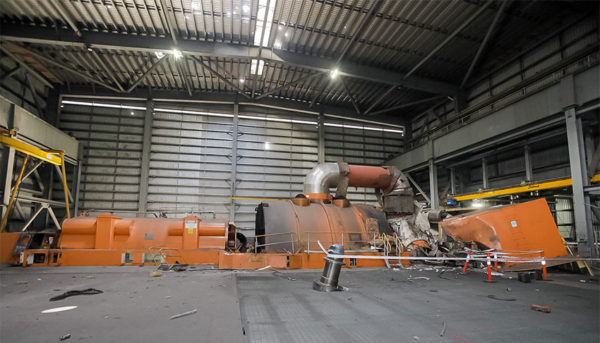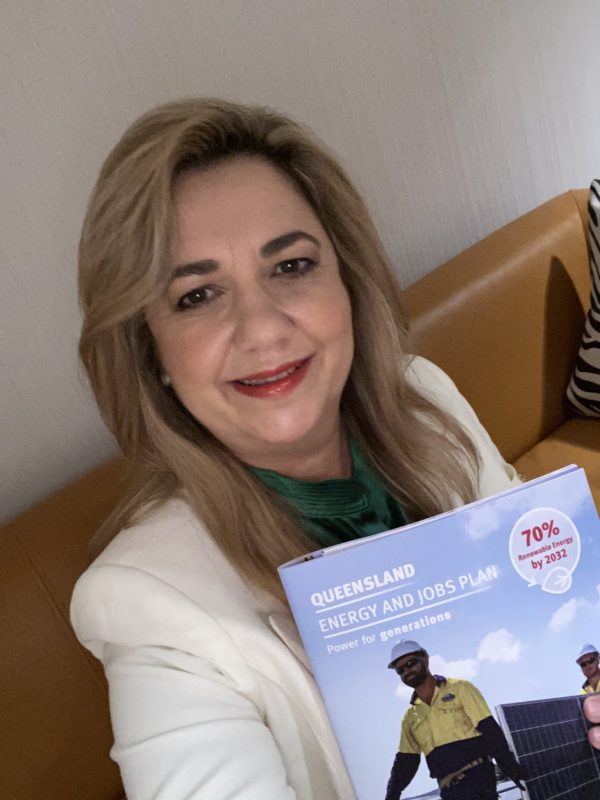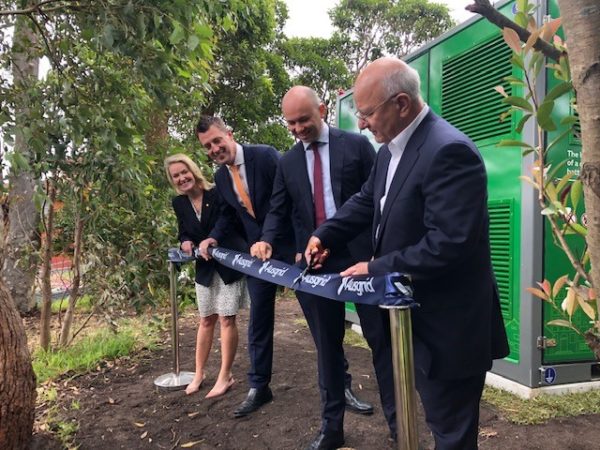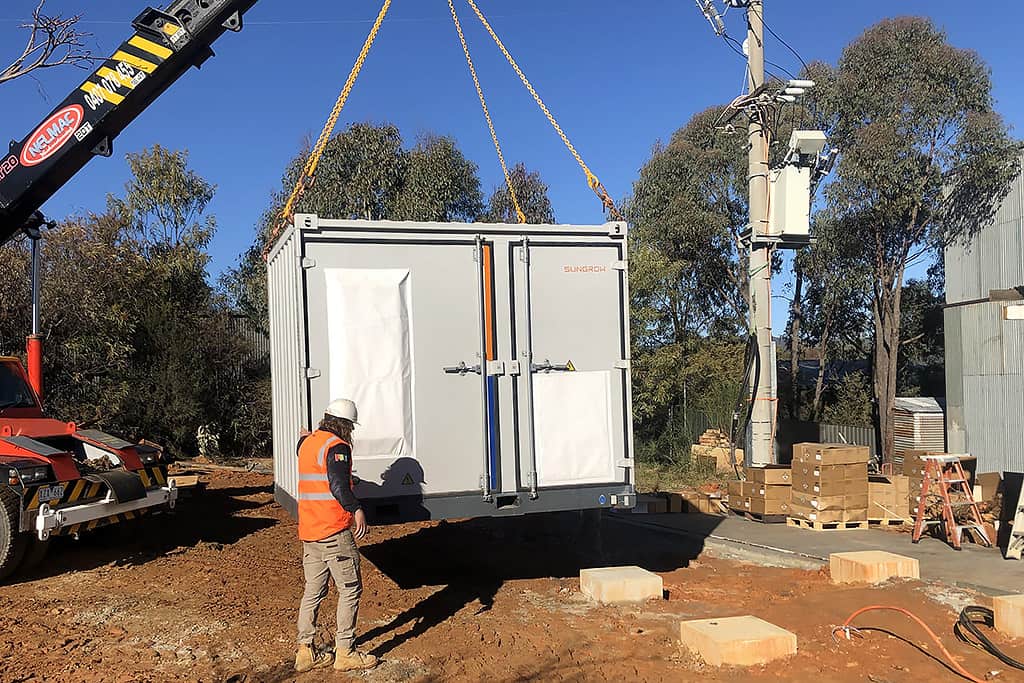The Emerald battery is one of 12 network-connected batteries slated for Queensland’s regions, with the government saying the rollout will help unlock more rooftop solar, as well as providing communities better energy security and local grid reliability.
The Emerald battery is a similar install to that completed in Tanby on the Queensland mid-coast, where a 4 MW / 8 MWh battery come online last September.
The rollout is part of state government-owned Energy Queensland’s Local Network Battery Plan announced following the explosion of the Callide coal generator in 2021.

Image: CS Energy
The strategy will eventually see at least 15 network-connected batteries installed across the state. “We now have 8 MWh batteries at Bohle Plains and Black River near Townsville, Kleinton near Toowoomba, Bargara near Bundaberg, Tanby near Rockhampton, and at Torquay near Hervey Bay,” Energy Queensland CEO Rod Duke said last September.
Duke said at the time the remaining nine batteries – including Emerald – would be spread across major centres in regional Queensland near communities that have significant rooftop solar generation “because we know that’s where they will have the greatest overall benefit.”
This all fits into a broader scheme from the Queensland government, with the state’s Minister for Energy, Mick de Brenni, saying in 2022 that the state’s publicly-owned power companies are investing in 720 MW of batteries. These include large-scale batteries like the 200 MW/400 MWh Greenbank project in Brisbane’s outer southern suburbs, as well as the mid-scale batteries like that slated for Emerald.
In line with the state’s Energy and Jobs Plan, a central focus is being placed on fitting Queensland out with with publicly-owned energy infrastructure. In this particular instance, the Emerald battery is owned by Ergon Energy, a subsidiary of Energy Queensland.

Image: Twitter/ Annastacia Palaszczuk
“This new battery at Emerald will ensure that the energy generated locally stays locally, instead of putting pressure on upstream infrastructure,” Energy Queensland’s General Manager for Energy Storage, Glenn Dahlenburg said.
“As we connect more renewables for our customers, battery storage will give us greater flexibility to connect rooftop solar, balance supply and demand, and keep voltages in check, which is vital for the security of the network that powers Queensland.”
Community battery take
While the state government is not referring to this fleet as ‘community batteries,’ it seems the rollout is looking to deliver on many of the promises the concept holds, and, being publicly-owned, the financial model also holds clout.
Community battery ownership models take many forms, ranging from projects owned by community members or councils to distribution network service providers (DNSPs), energy retailers, or other renewables investors.

Audgrid
In a recent feature in pv magazine, the Australian National University’s Bjorn Sturmberg argued the case for using community batteries as solar shifting devices is weak, but where the technology can really deliver is as a means to improve reliability, daily voltage control, reverse power flows, and energy resilience in the face of natural disasters – issues which simply can’t be worked out on the continental electricity system and have to be addressed locally.
Energy Queensland seems to also be pointing to these functions as a key case for its regional batteries, alongside unlocking additional solar capacity for local communities.
With Queensland looking to perform a massive energy U-turn in the next decade, as outlined in its Energy and Jobs Plan, the state government is seeking to drive its impressive solar uptake even higher.
Queensland has one of the highest penetrations of rooftop solar in Australia and indeed the world, with one in three homes fitted with systems. Collectively, the energy produced by Queensland rooftops is already the largest renewable generator in the state.
Congestion on the local grid is stifling solar uptake in some areas however – and the government is clearly looking to batteries to help address this.
Coming at the issue from another direction, the Queensland Competition Authority also proposed a 40% increase in the solar feed-in tariff for regional customers on the Ergon Energy network earlier this month. The move will undoubtedly help drive more solar uptake – placing an even higher imperative on ensuring local grids can handle the load.
This content is protected by copyright and may not be reused. If you want to cooperate with us and would like to reuse some of our content, please contact: editors@pv-magazine.com.









By submitting this form you agree to pv magazine using your data for the purposes of publishing your comment.
Your personal data will only be disclosed or otherwise transmitted to third parties for the purposes of spam filtering or if this is necessary for technical maintenance of the website. Any other transfer to third parties will not take place unless this is justified on the basis of applicable data protection regulations or if pv magazine is legally obliged to do so.
You may revoke this consent at any time with effect for the future, in which case your personal data will be deleted immediately. Otherwise, your data will be deleted if pv magazine has processed your request or the purpose of data storage is fulfilled.
Further information on data privacy can be found in our Data Protection Policy.